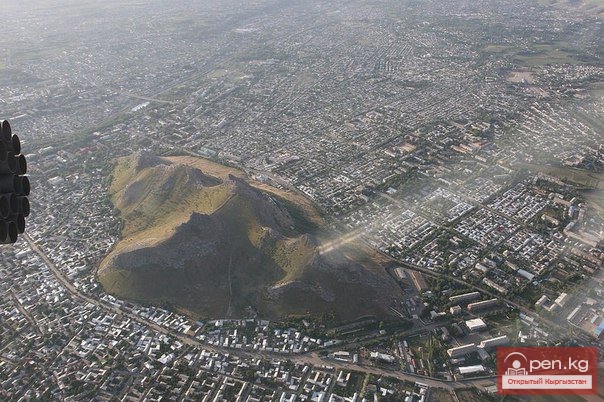Petroglyphs of Issyk-Kul. Saymaluu-Tash
The Ornok complex and the Saymaluu-Tash area. The clusters of petroglyphs, especially Ornok and Saymaluu-Tash, can be described as astonishing. The rock carvings of the Saymaluu-Tash area are located high in the Fergana Range at an altitude of 3000-3200 m above sea level.
These are places where priests performed mysterious rituals, such as sacrifices, and where the energy of destruction reigned. Entering a certain circle here, people feel nausea, dizziness, and even pain. Approaching another circle, they feel an energy of vigor. What the priests instilled during the ritual is what a person feels.
In places where petroglyphs are located, it is forbidden to consume alcoholic beverages or to do anything bad.
The Issyk-Kul Museum-Reserve of rock carvings - petroglyphs - in the open air "Saymaluu-Tash" continues to be one of the most popular places among tourists. It is located above Cholpon-Ata, between the city and the village of Kara-Oy.
The area of the complex, covering 42 hectares, is literally covered with stones of ancient history. There are several tens of thousands of them here. According to official data, ancient drawings are found on more than a thousand stones.
Foreign researchers conducting a survey counted about 5,000 such "canvases".
An impressive field, strewn with small and large stones, was formed over 13,000 years ago as a result of the melting of a huge glacier: a conical gap appeared in the mountains above "Saymaluu-Tash".
The drawings were made later by ancient civilizations of the Saka and Usun. All ancient images date back to the 8th-5th centuries BC. Primarily, ancient people depicted the most revered animal of that time - the goat, which has long symbolized the sun and bright spirits. This is also indicated by the fact that all horned animals are depicted on the stones only from the sunny side.
It was a gigantic temple in the open air, once occupying the western part of Cholpon-Ata, where people worshipped celestial bodies and performed religious rituals. The rock carvings played an important sacred role in the execution of these rituals, serving as a kind of virtual sacrifice and prayer, captured on stone.
Near the large petroglyphs are circular stone structures, possibly clan and family shrines, with a very interesting natural phenomenon - a geomagnetic anomaly, favorable for humans.
There is reason to believe that the large stone circles were used as astronomical "observatories" for observing the movement of celestial objects.
Issyk-Kul petroglyphs are unique in many aspects. Firstly, due to the artistic realism of the images, many of which belong to masterpieces of the Scythian-Saka "animal style". Secondly, the size of some petroglyphs exceeds 1 meter, which is extremely rare. Thirdly, the uniqueness of many scenes and plots. Fourthly, the unprecedented technique of applying individual drawings, for example, the relief image of a deer, made from the protrusions of the stone.
The embodiment of all these distinctive features is the central petroglyph located at the lower part of the museum.
In the foreground is depicted a herd or family of mountain goats (toо-teke, or ibex). The figures of the mountain goats are perhaps the largest in Central Asia, depicted in motion, which allows us to classify the petroglyph as one of the outstanding examples of the Saka "animal style".
In the background are figures of hunters and domesticated leopards in the process of drive hunting. Such a type of hunting existed only in Ancient Egypt, where domesticated cheetahs were used to hunt gazelles.
By the way, on the territory of the museum, there is a petroglyph depicting cheetahs in various dynamic poses, which also has no analogs.
Of great interest are the single and double images of deer, which are an artistic embodiment of the mythological mother-deer - an image widely spread in Semirechye, Altai, and Southern Siberia. One of the Kyrgyz tribes, buгу (literally translated as the name of the noble deer), revered the mother-deer as their totem and ancestor.
Numerous depictions of camels with drivers and riders prove the existence of the northern branch of the Great Silk Road, passing along the shores of Issyk-Kul even in the Saka-Usun period (8th century BC - 5th century AD). This is also evidenced by the findings of coins from different peoples that circulated on the Great Silk Road at different times.













































